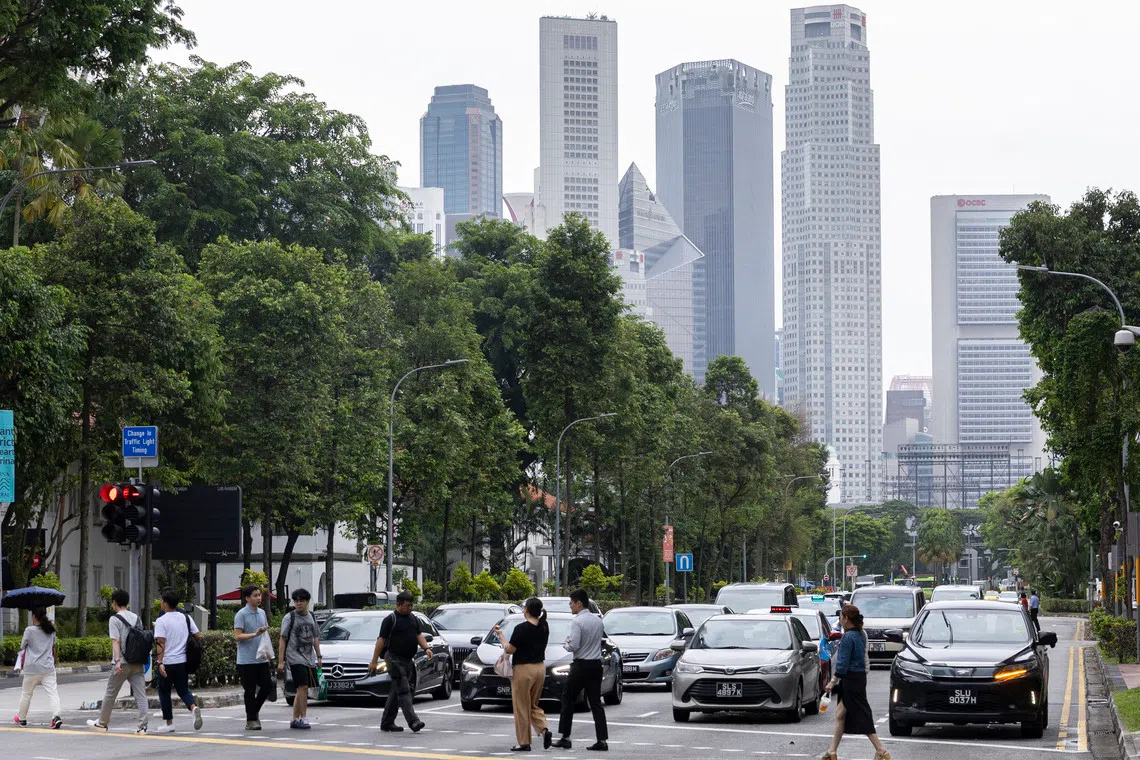S’pore Q4 hiring outlook falls below global average, but logistics and healthcare buck trend: Poll
Sign up now: Get ST's newsletters delivered to your inbox

Net employment outlook declined again to reach 20 per cent for the upcoming fourth quarter for 2025.
ST PHOTO: BRIAN TEO
Follow topic:
SINGAPORE – Hiring optimism here continued to weaken overall, with the net employment outlook declining again to reach 20 per cent for the upcoming fourth quarter of 2025, according to a survey.
This result of a quarterly poll by recruitment firm ManpowerGroup is the joint-lowest figure in over three years and 3 percentage points below the corresponding global average across 42 markets, in a sign of the global trade fog bearing down hard on the Republic.
Net employment outlook is a measure of hiring optimism, defined as the percentage of companies surveyed that intend to take on new staff, minus the percentage that intend to downsize, in the upcoming quarter.
Almost half of the 524 employers here polled in July plan to maintain current staffing levels, while 37 per cent plan to hire, 17 per cent anticipate a decrease in their staffing levels and 1 per cent of them are unsure of their plans, according to the results released on Sept 9.
With a net employment outlook of 48 per cent, the transport, logistics and automotive industry bucked the trend to be the only one with a net employment outlook up from both the previous quarter, and the same time in 2024.
The industry overtook healthcare and life sciences, which recorded a net employment outlook of 38 per cent, to be the one with the most strongly positive outlook out of nine segments.
The figure notched by the transport, logistics and automotive industry here is the second-highest out of 42 markets surveyed globally, exceeding the global industry average by 24 percentage points, ManpowerGroup noted in a statement on Sept 9.
The momentum in the transport, logistics and automotive sector is largely driven by Singapore’s strategic role as a global logistics hub, said Ms Linda Teo, country manager at ManpowerGroup Singapore.
“However, it remains to be seen whether this momentum will be sustained as global trade dynamics continue to evolve.”
On the overall hiring outlook, Ms Teo said many employers are choosing to maintain current staffing levels, confident that their existing teams can meet business goals while they monitor economic developments.
Coming in third in net employment outlook was communication services at 28 per cent.
Only the top three industries here by net employment outlook came in above global averages observed in their industry.
The remaining industry segments came in at under 20 per cent in net employment outlook.
Both the energy and utilities as well as “other” sectors recorded 18 per cent.
Employers in the “other” category include the government or public service, not-for-profit or non-governmental organisations, religious organisations, charities and educational institutions.
Employers in industrials and materials posted a net employment outlook of 17 per cent.
Rounding up the bottom were information technology at 15 per cent, consumer goods and services at 12 per cent, and finance and real estate at 10 per cent.
Information technology had plunged over 20 percentage points from the previous quarter, amid emerging concerns that artificial intelligence advancements would undercut entry-level hires.
Going by company size, small companies with 10 to 49 employees posted the strongest net employment outlook here at 33 per cent, outstripping the 24 per cent from larger companies with 250 to 999 employees.
This was followed by 20 per cent for major firms with over 5,000 employees, 16 per cent for those with 1,000 to 4,999 employees, and 15 per cent for mid-sized firms which employ 50 to 249 employees.
Micro-sized companies with under 10 employees posted the weakest net employment outlook of 12 per cent this time around, in a reversal of fortunes from 37 per cent and top place a quarter ago.
Regionally, the Asia-Pacific posted a net employment outlook of 28 per cent, with the United Arab Emirates, India and China all recording figures well above 30 per cent, while Hong Kong, at 6 per cent, remained the most cautious in the region.
ManpowerGroup also found that the most prevalent recruitment challenge for Singapore employers polled lies in attracting qualified candidates, more so than filling complex technical roles or improving candidates’ experience of the recruitment process.


